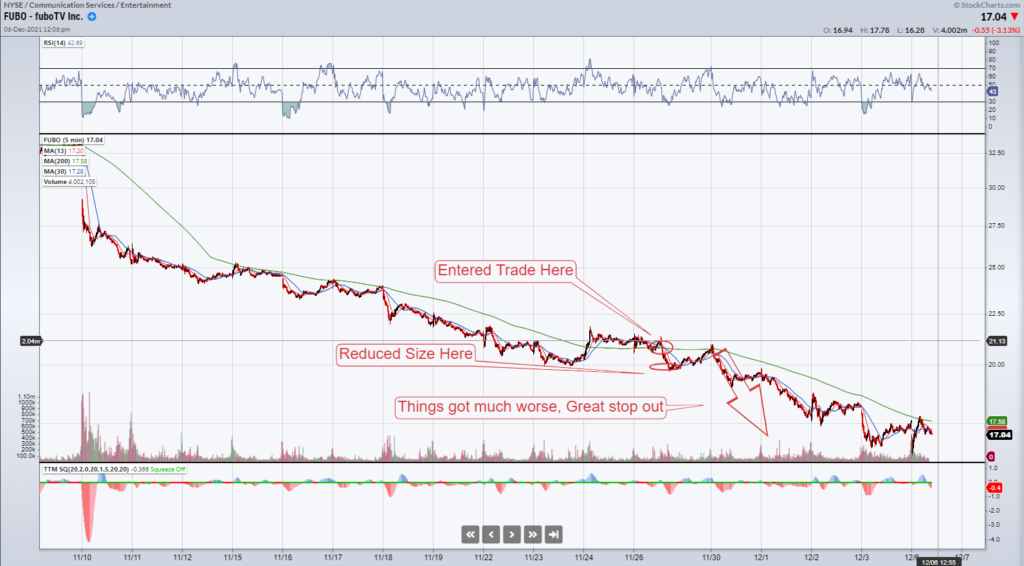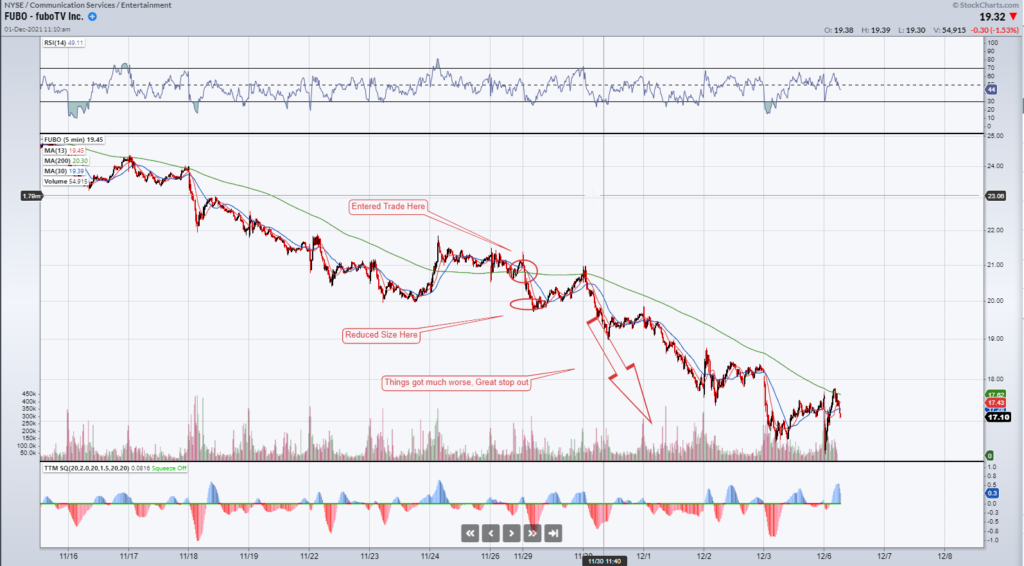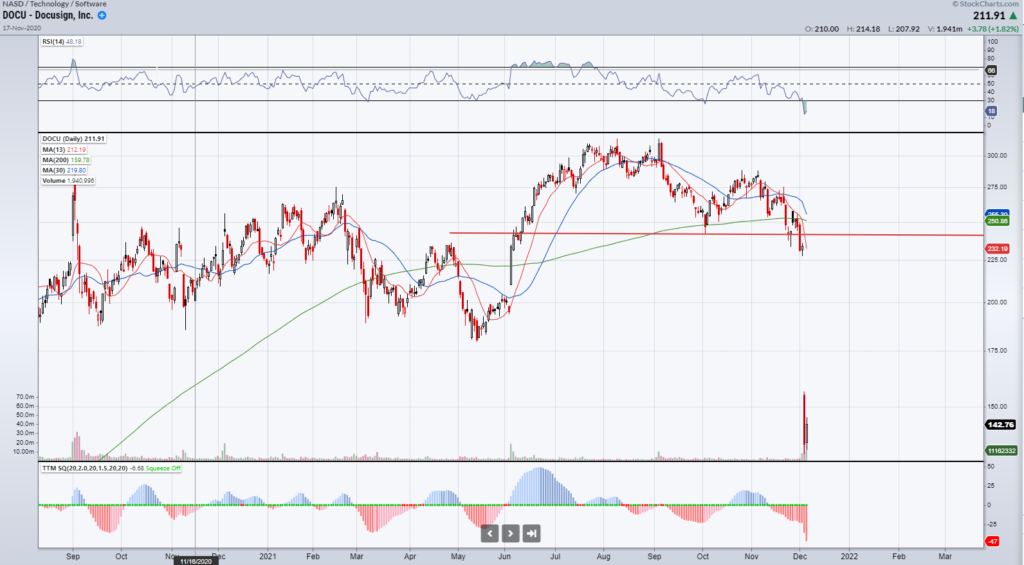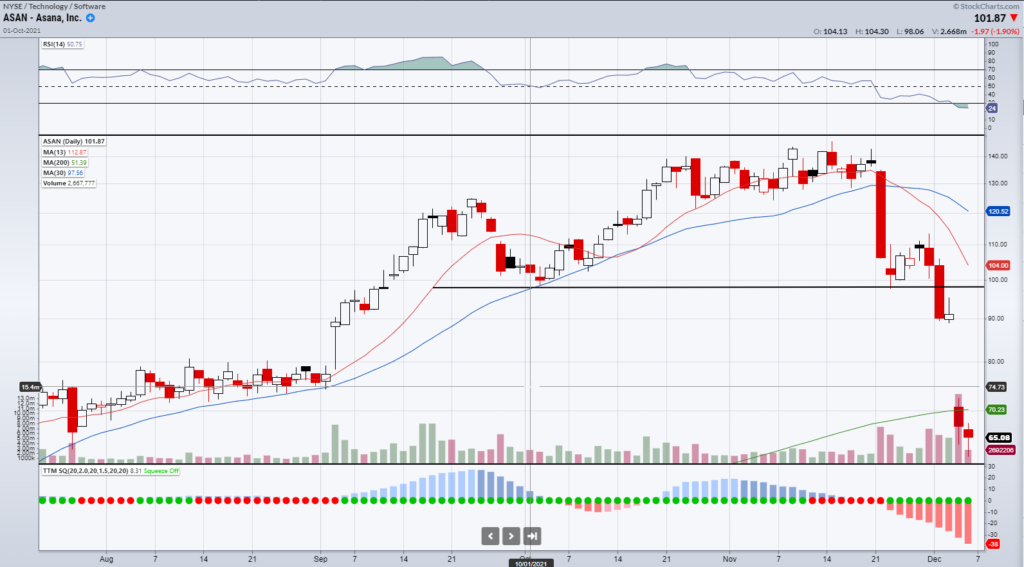It’s been wild out there.

Last week was a vicious week for a lot of traders and portfolio managers, especially for those who weren’t prepared. I’m seeing some nasty internals in the market, not the kind of stuff you want to see in a bull market.
When we get back-to-back selloffs on Friday, I don’t think we’re done when it comes to market pain.
If you think things are bad now, you should prepare for what could come because it could turn into something much worse. I’m making sure I’m cashed up and have exited a lot of my positions. I’m doing what I’ve got to do to protect myself. In times like these, I’m not worried about the upside, I’m worried about protecting the downside. Right now, I’m focused on managing position sizing, navigating the markets, and getting ready for some chop!
Today I’d like to discuss why it’s important to protect your Ass…ets by cutting trades that are not working quickly and adjusting your position sizing in times of increased market volatility. Below is an example:

Hope Is Not A Trading Strategy
There are numerous reasons why trades that are not working need to be cut. First of all, hope is not a trading strategy. Legendary trader Paul Tudor Jones once said you never want to wish or hope. You always want to be trading, in control. Cutting trades is all about opportunity costs.
Last week I took a stop out on FUBO. It was a nice idea, the trade set up, I had good risk/reward. I followed my plan and got the F out.
My Trade Plan:
- Stop under $19.80 – just under the recent low made last week
- Target near $25, which is around the recent support level before the breakdown to $20.
My Trade:
- FUBO Dec 10 2021 $20 call near $1.80
Here’s how I traded it.

As we broke below 19.80, I hit out of most of my position. Over the rest of the week, FUBO traded below $17 with the market weakness. I didn’t fight the stock, I didn’t double down, I reduced my risk as planned and cut the trade to a manageable outcome. This is also why I love structuring my trades with options, as the risk can be pre-defined if something unexpected happens.
FUBO didn’t work out, but the risk-reward was there! I respected my stop losses. Adding to losers is how traders blow up! Let’s have a look at a couple of more charts to see why it’s important to stay in control in a volatile market.
DOCU

The chart above is Docusign (DOCU). This is the kind of stuff I saw during the .com bubble. The stock had a huge run-up, but for me, it wasn’t worth 5 times what it was pre covid. Last week it lost its bid, then in one day down 40%.
This is not a penny stock, it was a $50 billion company!
Imagine leveraging up and not stopping out of this trade. That is potentially disastrous and how traders blow up accounts. Leverage up big out of the money calls and you’re a swinger, then the stock drops another 40%, which could wipe out your portfolio and you’re eating Ramen.
ASAN

ASAN INC (ASAN)– another one! The same setup failed, then down 30% in one day!
If you don’t have stop losses, you will walk into stuff like this that can decimate you!. Think about position sizing and allocations that make sense!
These moves seem unlikely, but as you can see, it happens over and over. And the whole market could do a similar move. It might not seem possible, but it could happen! And would catch a lot of people off guard, really, really quick!
Position Sizing
If you’re day trading in and out of a liquid stock, you can use leverage with good risk management, only if you’re disciplined and stop out of your trades.
If you’re swing trading, you could take some big heavy hits without the appropriate sizing!
These things can get out of hand sometimes, keep that in mind! Maybe you’re used to sizing 10%, consider reducing to 5 or 2% based on market volatility. Think about how you will sleep at night and how it will affect you! When market volatility increases I reduce the size I am trading, to protect myself. I don’t want to be a hero in this type of market. I preserve my capital for the next time the market sets up well. Right now, I am trading very small!
Respecting stops is what separates great traders from gamblers. In trading, you always want to be in control, seeking the following great trading setup. Trades need to be cut to protect your psychological, emotional, and intellectual capital, so you are always ready to perform to the best of your ability.
Where to next in the market? I don’t know I don’t want to be long much now. All the stops at the lows are being taken out after pops. I think the market is due for a bounce, but right now I prefer to stay on the sidelines.
Bottom Line
I’m a big boy, I take my losses, I own it. I don’t let my losses snowball into something I can’t handle and something I can’t stomach! I made the trade, I took the trade, I’ve got to have my plan and stick to it! That’s how I’ve been around for so many years, I know I’ve got to have stop losses!
Shit happens and is a part of the game. How we react to these situations separates the best traders from people who are forced out of the game. It is crucial to cut trades that are not working quickly. Getting out of trades frees up your mind to pursue new trading setups.
Legendary trader Jessie Livermore once said “A loss never bothers me after I take it. I forget it overnight. But being wrong- not taking the loss- that is what does damage to the pocketbook and to the soul.” Moving on to the next trade as quickly as possible can helps maintain your emotional well-being. A vital part of not only trading but your life.
You don’t want to be a hero in these market conditions. Preserve your capital for the next time the market sets up well.






5 Comments
I love your trading concept. learned a lot from you.
I agree with you 100%.
Iam happy for that
good morning, thank you very much you’re stop loss lessons are really good always appreciate.
Jeff, Do you also trim or sell your longterm investments in these volatile times?